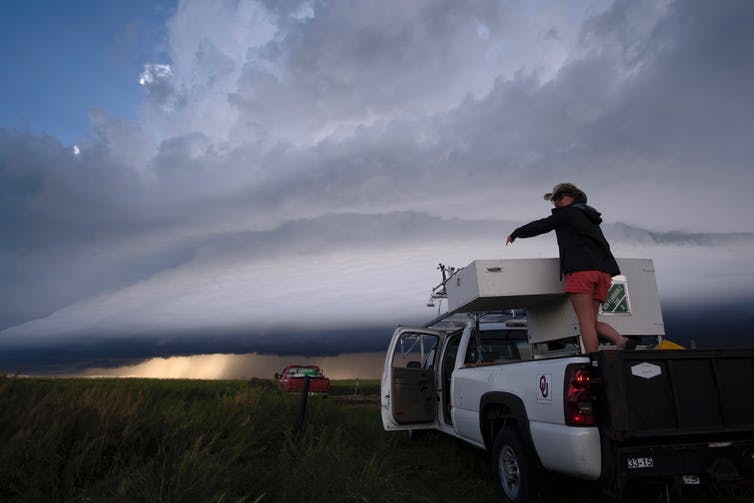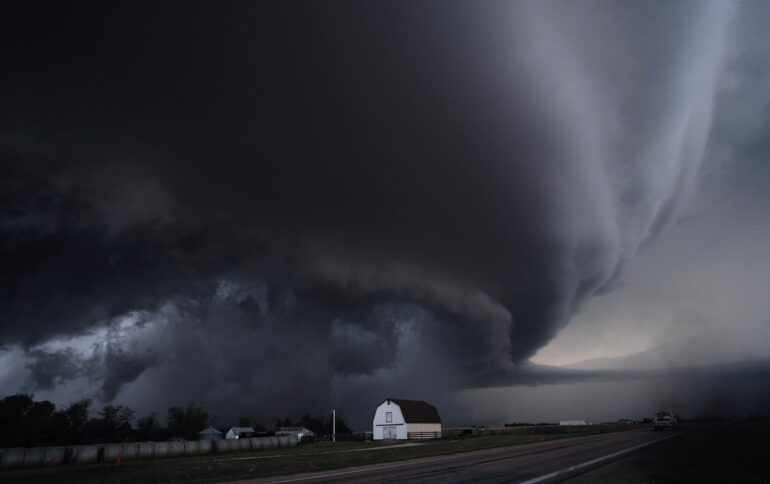The deadly tornado outbreak that tore through communities from Arkansas to Illinois on the night of Dec. 10-11, 2021, was so unusual in its duration and strength, particularly for December, that a lot of people including the U.S. president are asking what role climate change might have played – and whether tornadoes will become more common in a warming world.
Both questions are easier asked than answered, but research is offering new clues.
I’m an atmospheric scientist who studies severe convective storms like tornadoes and the influences of climate change. Here’s what scientific research shows so far.
Climate models can’t see tornadoes yet – but they can recognize tornado conditions
To understand how rising global temperatures will affect the climate in the future, scientists use complex computer models that characterize the whole Earth system, from the Sun’s energy streaming in to how the soil responds and everything in between, year to year and season to season. These models solve millions of equations on a global scale. Each calculation adds up, requiring far more computing power than a desktop computer can handle.
To project how Earth’s climate will change through the end of the century, we currently have to use a broad scale. Think of it like the zoom function on a camera looking at a distant mountain. You can see the forest, but individual trees are harder to make out, and a pine cone in one of those trees is too tiny to see even when you blow up the image. With climate models, the smaller the object, the harder it is to see.
Tornadoes and the severe storms that create them are far below the typical scale that climate models can predict.
What we can do instead is look at the large-scale ingredients that make conditions ripe for tornadoes to form.

A researcher with NOAA and the Oklahoma Cooperative Institute prepares a light detection and ranging system to collect data at the edge of a storm.
Mike Coniglio/NOAA NSSL
Two key ingredients for severe storms are (1) energy driven by warm, moist air promoting strong updrafts, and (2) changing wind speed and direction, known as wind shear, which allows storms to become stronger and longer-lived. A third ingredient, which is harder to identify, is a trigger to get storms to form, such as a really hot day, or perhaps a cold front. Without this ingredient, not every favorable environment leads to severe storms or tornadoes, but the first two conditions still make severe storms more likely.
By using these ingredients to characterize the likelihood of severe storms and tornadoes forming, climate models can tell us something about the changing risk.
How storm conditions are likely to change
Climate model projections for the United States suggest that the overall likelihood of favorable ingredients for severe storms will increase by the end of the 21st century. The main reason is that warming temperatures accompanied by increasing…
